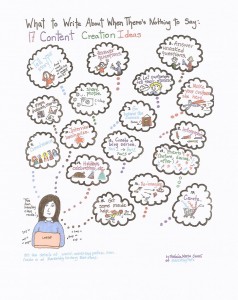 There’s been much talk in the past year about press releases being dead and ineffective.
There’s been much talk in the past year about press releases being dead and ineffective.
No one reads them, and journalists don’t care. That’s what some publicists and social media experts have said.
I’m not in that camp – as a journalist and as a publicist. Here’s why: Press Releases still work to get the media’s attention and to reach customers.
I helped a new client send out a press release on July 26. The client is a new charity with a heady task: get the nation to pay down the national debt by sending in donations.
The $14.6 Trillion national debt has been the news, and a looming Aug. 2 deadline was generating a lot of attention.
Because hitching your news to a national trend is a great way to get attention, we decided to ride the wave of news surrounding the debt ceiling limit deadline.
We wrote the release playing on the crisis, and sent it out via PR Web. The intention was to send the release out into the world, letting PR Web’s vast network carry the release to all points because the issue is national, and the intended audience is all Americans.
The only media pitching we did was to the local weekly newspaper and the county’s daily newspaper. Neither responded in the first week.
The release was picked up in many places. According to PR Web stats, the release:
- Appeared in 22, 475 news feeds in the first five days
- 2,426 media outlets received the press release in the first five days
- 461 people clicked on a link and read the release from a PRWeb site
- 101 people printed, forwarded or clicked on the charity’s website link
- 37 online media and news sites reported running the release.
No one from the media called the first week asking about the release.
But many people did what the charity wanted: to send in a donation to pay off the national debt.
Not pleased with the lack of media coverage, we decided to see what else we could generate.
First, we sent a direct message on Twitter to The News Chick asking her whether she’d be interested in a follow up angle to the debt story, one with a local Seattle and Washington state angle.
Great, she said, asking for a guest post. We dashed off a post, which Thomas added to, and it was posted on Sunday, August 7.
The NewsChick – Linda Thomas’ Blog: “Local effort to pay off the national debt”
We’re not sure whether Thomas’ blog touched off the ensuing media onslaught or whether Monday was a slow news day, but either way, Monday was flooded with calls and emails from reporters.
The following is a list of the coverage the charity received:
August 8
KOMO Radio AM 1000/97.7 FM – short, taped radio segment
KOMO 4 TV – 4 p.m. and 6 p.m. segments on Seattle TV station
August 9
KIRO Radio FM 97.3 – Top and the bottom of the News short segment
Skagit Valley Herald – front page news story above the fold
August 10th
La Conner Weekly News: front page news story
Joe Teehan Show – radio interview KBIA AM930 in Bellingham Noon
Dori Monson show – radio interview 97.3 KIRO FM in Seattle at 12:35
Victoria Taft Show – radio interview KPAM AM860 in Portland at 1:45 p.m.
An Associated Press (AP) story runs in many newspapers and online news sites including: MSNBC, Seattle PI, Seattle Times, Tri-Cities Herald, Bellingham Herald, The Wenatchee World, Northwest Cable News, Tacoma News Tribune, and The Olympian, among others.
Outside Washington state, the AP item ran online on sites including The Dallas News, The Daily Journal in Indiana, Boise Idaho’s KTVB, The Citizen-Times in Ashville, California, and also out of the country in the Victoria Advocate in Victoria, BC
August 11th
The Bob Rivers Show – KJR 95.7 FM at 8:30 am
A week later, we had generated more than 752 Facebook likes or recommendations – without a Facebook page – but on media sites; established a Twitter handle and generated 15 followers – with no effort – and learned of several people who have decided to tackle the national debt too.
The news sites also generated more than 16 Tweets, more than 300 comments, and more than 1,500 visits to the charity’s web site.
All from a single press release, two email pitches to local papers, and one direct message on Twitter.
What results have you seen recently with your press releases? Do you think they are ineffective in reaching the media or your customers?











